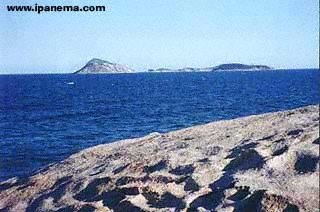

| Home » Rio for Beginners » Weather the Climate |
 |
 Rio
de Janeiro is at sea level, near the Tropic of Capricorn. It has a
hot and damp tropical climate. Being on the Southern Hemisphere,
the seasons are reversed, as in Australia and Africa.
There are definitely more sunny than rainy days. Two weeks or
more without a single drop of rain are not uncommon. A simple sudoeste wind (Southwest ) is enough to make doors start banging, though,
announcing an inevitable storm - a treat to watch from the safety
of your hotel window.
Rio
de Janeiro is at sea level, near the Tropic of Capricorn. It has a
hot and damp tropical climate. Being on the Southern Hemisphere,
the seasons are reversed, as in Australia and Africa.
There are definitely more sunny than rainy days. Two weeks or
more without a single drop of rain are not uncommon. A simple sudoeste wind (Southwest ) is enough to make doors start banging, though,
announcing an inevitable storm - a treat to watch from the safety
of your hotel window.
Other factors that influence the weather in Rio are El Niño and its sister La Niña. And then there are the ocean drifts. When the currents turn, a chilly water comes from the Antarctic - and sometimes stranded penguins end up at the beach!
Summer is probably Rio's most popular season. It starts to get hotter around October, and summer vacations start in mid-December. On sunny days, digital thermometers in Ipanema and Copacabana may read 40° C, about 104 F. If you do not turn on the air conditioner, when you leave the shower start wondering if you forgot to towel off, or if you're already breaking a new sweat!
The tropical summer sun is very hot after 10 a.m. If you have fair skin (and even if you don't), take it easy and do not push your luck. Some sessions at a tanning salon to condition your skin before you go on board may be a good idea. Only it will not save you from a wearing a serious sunscreen, hat, and sunglasses. Summer nights are fresher, but not necessarily fresh.
According to a popular song, March is rain season, and the beginning of fall. Sometimes fall takes a while to catch up. A sure sign is when the hundreds of amendoeira trees in the streets start turning gold and red, before losing their leaves. Nights are cooler, and sometime around June winter eventually comes along.
Winter vacations happen in July. Winter nights can be chilly, with the temperature dropping to around 15° C (around 70 F). Laugh if you live in a cold country, but the fact is that thermal comfort is completely relative. Wind and dampness could make you feel even colder, and the homes do not have a heating system. Cariocas like to joke saying phrases like "The winter of 97 happened on the night of June 9". But everybody keeps a good leather jacket or parka in the closet for eventualities. You may even need a hat and gloves at night, if you go to mountain resorts Off-Rio, like Mauá, Itatiaia or Penedo.
Even in the winter, if it stops raining long enough it gets hot again. Locals call this veranico, or mini-summer. They last as long as one or two weeks, and the temperature goes up to almost 30° C (around 90 F). A cold front from Argentina always comes to spoil the fun, though, sometimes bringing a cabeça d'água, or sea storm. The ressaca (rough sea) makes great photos, but play it safe and do not get too close.
Spring is the most agreeable season in Rio. With less humidity in the air, the sunny days are especially bright. This is when you get the prettiest pictures from overlooks like the Sugarloaf and Corcovado hills. It is a wonderful time to visit the Tijuca Forest, Botanical Gardens, and the Flamengo Reclaim. Expect temperatures ranging from 20 to 30° C (70-90 F).
To save you from the guesswork, our online forecast service will help you get an idea of what the weather is like before you go onboard!